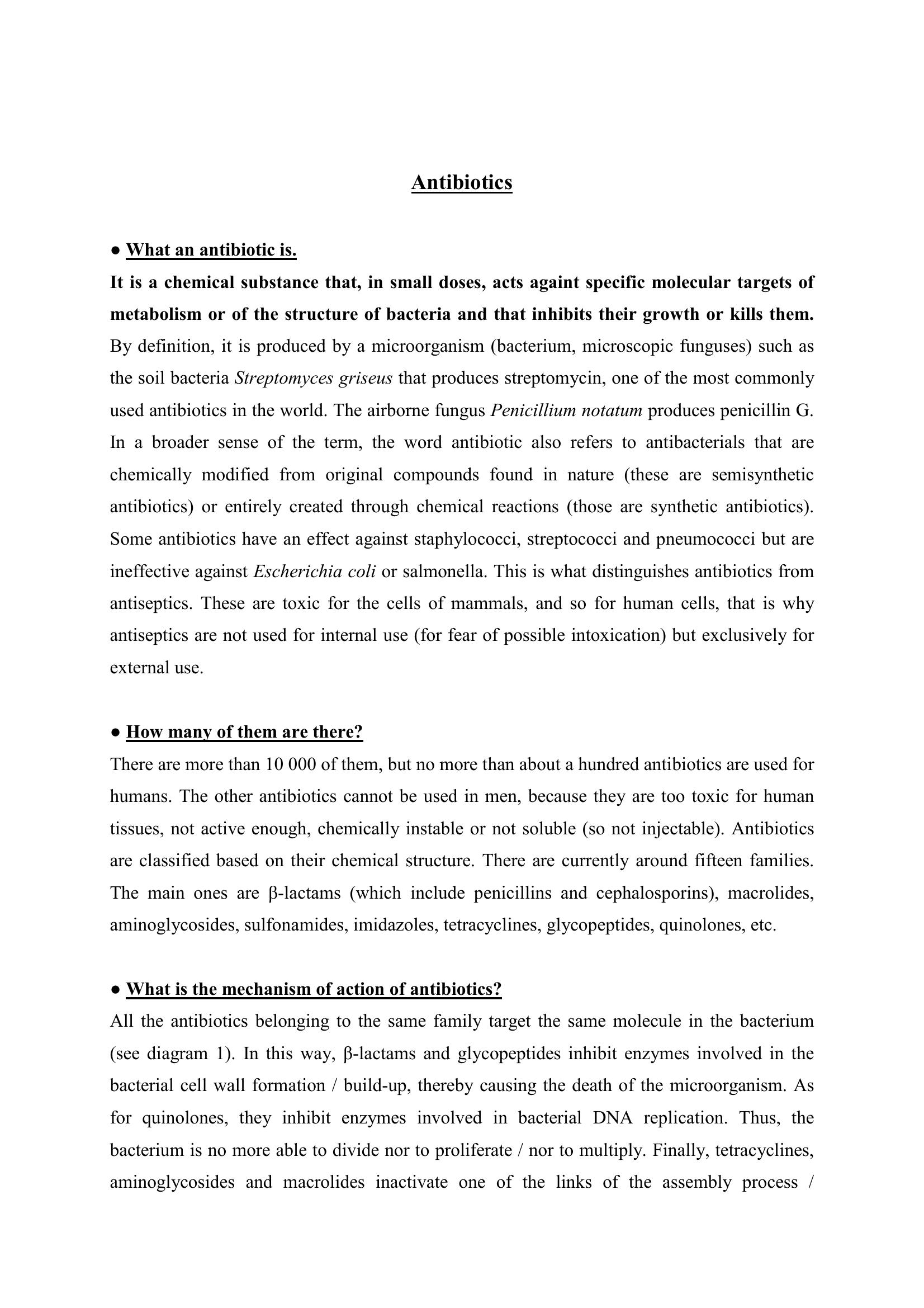Antibiotics
Publié le 16/05/2020
Extrait du document
«
Antibiotics
● W hat an antibiotic is.
It is a chemical substance that, in small doses, acts againt specific molecular targets of
metabolism or of the structure of bacteria and that inhibits their growth or kills them.
By definition, it is produced by a microorganism (bacterium, microscopic funguses) such as
the soil bacteria Streptomyces griseus that produces streptomycin, one of the most commonly
used antibiotics in the world.
The airborne fungus Penicillium notatum produces penicillin G.
In a broader sense of the term, the word antibiotic also refers to antibacterials that are
chemically modified from original compounds found in nature (these are semisynthetic
antibiotics) or entirely created through chemical reactions (those are synthetic antibiotics).
Some antibiotics have an effect against staphylococci, streptococci and pneumococci but are
ineffective against Escherichia coli or salmonella.
This is what distinguishes antibiotics from
antiseptics.
These are toxic for the cells of mammals, and so for human cells, that is why
antiseptics are not used for internal use (for fear of possible intoxication) but exclusively for
external use.
● How many of them are there?
There are more than 10 000 of them, but no more than about a hundred antibiotics are used for
humans.
The other antibiotics cannot be used in men, because they are too toxic for human
tissues, not active enough, chemically instable or not soluble (so not injectable).
Antibiotics
are classified based on their chemical structure.
There are currently around fifteen families.
The main ones are β-lactams (which include penicillins and cephalosporins), macrolides,
aminoglycosides, sulfonamides, imidazoles, tetracyclines, glycopeptides, quinolones, etc.
● What is the mechanism of action of antibiotics?
All the antibiotics belonging to the same family target the same molecule in the bacterium
(see diagram 1).
In this way, β-lactams and glycopeptides inhibit enzymes involved in the
bacterial cell wall formation / build-up, thereby causing the death of the microorganism.
As
for quinolones, they inhibit enzymes involved in bacterial DNA replication.
Thus, the
bacterium is no more able to divide nor to proliferate / nor to multiply.
Finally, tetracyclines,
aminoglycosides and macrolides inactivate one of the links of the assembly process /.
»
↓↓↓ APERÇU DU DOCUMENT ↓↓↓

































